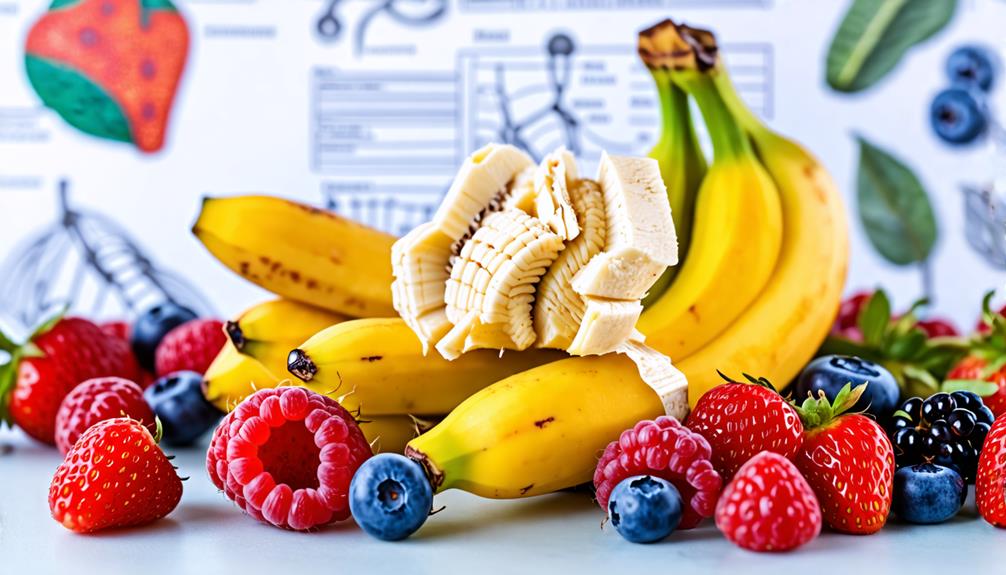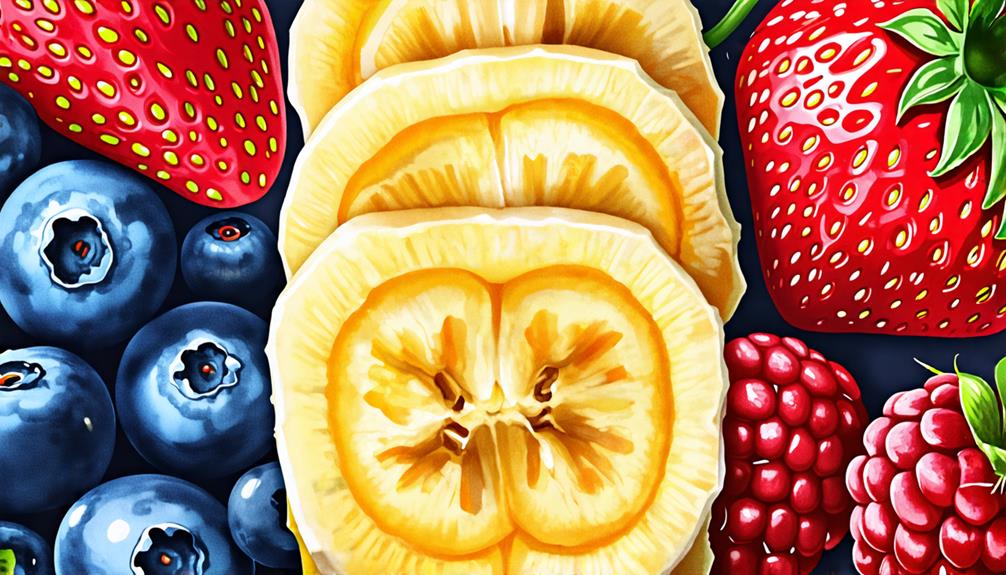You might think you know what a berry is, but nature has a way of surprising us. When you picture a berry, you're likely imagining small, round fruits like strawberries or blueberries. However, the botanical world doesn't always align with our culinary expectations. In fact, bananas, those curved yellow fruits you've been peeling and eating all your life, are technically classified as berries. This revelation isn't just a fun fact; it's a gateway to understanding the fascinating world of plant taxonomy and how scientific classifications often diverge from our everyday perceptions. But what exactly makes a berry a berry, and why do bananas fit the bill?
Key Takeaways
- Bananas develop from a single ovary of a flower, meeting the botanical definition of a berry.
- They contain multiple seeds embedded within their fleshy interior, another characteristic of true berries.
- Unlike strawberries and raspberries, bananas fit the scientific classification of berries despite common misconceptions.
- Culinary definitions often differ from botanical classifications, leading to confusion about which fruits are true berries.
Botanical Classification of Berries

Botanists define berries in a way that might surprise you, focusing on the fruit's structure rather than its common name or culinary use.
A true berry is a fleshy fruit that develops from a single ovary and contains multiple seeds embedded within its flesh. It's characterized by three distinct layers: the exocarp (skin), mesocarp (fleshy middle), and endocarp (seed encasement).
This botanical classification often contradicts common perceptions. While you might think of small fruits like strawberries or raspberries as berries, they don't fit the scientific definition.
Surprisingly, bananas are true berries, along with tomatoes, grapes, and kiwis. Even some fruits commonly considered vegetables, such as avocados and cucumbers, fall into this category.
These misconceptions arise from the disconnect between culinary definitions and botanical classifications, highlighting the importance of understanding the scientific criteria for berry classification.
Bananas as Unexpected Berries
You might be surprised to learn that bananas, despite their elongated shape and lack of visible seeds, are actually classified as berries by botanists. This unexpected classification stems from the scientific definition of a true berry: a fruit that develops from a flower with one ovary and contains seeds embedded in its fleshy interior.
Bananas fit this description perfectly, with their soft skin (exocarp), fleshy middle (mesocarp), and microscopic seeds.
The common misconception that bananas aren't berries arises from their culinary use and appearance, which differ from typical berries. However, in the plant world, bananas share their berry classification with other unexpected fruits like tomatoes and avocados.
This scientific categorization highlights the importance of understanding botanical definitions rather than relying solely on culinary perceptions when classifying fruits.
Culinary Vs. Scientific Definitions

When it comes to defining fruits, you'll find a stark contrast between culinary traditions and scientific classifications. Culinary definitions often label small, juicy fruits as berries, while excluding true berries like bananas. This discrepancy stems from the everyday use of language versus botanical precision.
Scientifically, berries are fruits that develop from a single ovary and contain multiple seeds. This classification includes bananas, tomatoes, and grapes. However, in the kitchen, you're more likely to treat these differently based on their appearance and common usage.
These misunderstandings arise when culinary terms overshadow scientific ones, leading to confusion about fruit classifications. By recognizing the differences between botanical and culinary definitions, you'll gain a deeper appreciation for the diversity of fruits.
Understanding why bananas are classified as berries, despite common misconceptions, can broaden your perspective on the fascinating world of fruit taxonomy.
Conclusion
You've learned that bananas are technically berries, challenging your culinary assumptions. This botanical classification opens your eyes to the differences between scientific and everyday definitions.
You'll now look at fruits differently, understanding that size doesn't determine berry status. Next time you're enjoying a banana, you'll appreciate its unique place in the plant world.
Remember, nature's classifications often surprise us, encouraging you to keep exploring and questioning.

Leave a Reply